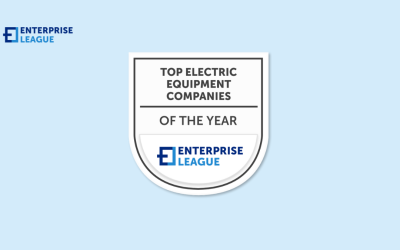5 challenges SMBs face in the customs clearance process and how to tackle them
April 01, 2024

Over the years, international trade has witnessed impressive growth. Despite setbacks like the pandemic, global businesses never stopped thriving and were the quickest to recover.
Trade growth for goods and services was robust in 2022. Surprisingly, global trade in goods was almost 33% higher than its level in 2019. Likewise, trade growth in services was 15% more than the 2019 levels.
Considering these statistics, businesses of all sizes have valid reasons to engage in cross-border transactions to access new markets. Small and medium-sized businesses (SMBs) are no exception. According to recent statistics, 166,384 SMBs in the US export, making up 26% of all exports and 96% of all exporters in the country.
Despite the encouraging numbers, you should be aware of the challenges you may encounter as an SMB diving into global trade. Navigating the customs clearance process is perhaps the toughest one, with its complexities often turning off small business entrepreneurs. However, awareness and proper planning can make these challenges surmountable.
In this article, we will explain the hindrances of the customs clearance process and suggest a few actionable ways to overcome them.
Customs clearance challenges for SMBs
Customs clearance is mandatory to get your goods through or in a country. You need to be compliant to ensure that your goods legally pass the border. Conversely, failing to meet the customs authority’s requirements may result in the inspection of goods, delays, and penalties.
Several factors make the process challenging, specifically for SMBs new in the industry. These include:
Cumbersome documentation
Handling extensive paperwork is often the most complicated part of customs clearance for SMBs. As a shipper, you need to file several documents to the importing country’s customs before the departure of your goods. These include invoices, certificates of origin, packing lists, and various licenses and permits.
You can imagine the time and effort required to manage these documents. They can easily strain the operational efficiency of SMBs, making it hard to compete in the international market.
Complex tariff structures
Tariff classifications, duty rates, and trade agreements create an intricate web for SMBs seeking global expansion through trade. Navigating these aspects can be even harder when you have limited resources and expertise. You may struggle to determine the correct classification of goods and understand preferential tariff treatments. Additionally, the constantly evolving regulations require you to stay a step ahead.
Regulatory requirements
Understanding and complying with US and foreign regulations can be overwhelming. You may need an export license before shipping some products. Similarly, you may not be able to sell to certain countries depending on its diplomatic stature, while others might have certain product standards you’ll need to meet.
There may also be considerations when shipping to free trade agreement countries. SMBs with limited compliance capabilities may struggle to follow these regulations.
Cultural and language barriers
As you embark on the international trade journey, you’ll likely need to interact with suppliers, customers, and customs officials from diverse linguistic backgrounds. Communication barriers may impede efficient customs clearance if not properly planned for.
Non-transparent clearance process
Another challenge SMBs may come across during customs clearance is uncertainty and lack of transparency in the process. Unexpected costs, delays, and inconsistent enforcement of regulations can slow down consignments and even disrupt supply chains. Such issues can affect your ability to meet deadlines, commitments, and customer demands.
How to cvercome customs clearance process challenges
While the challenges related to customs clearance sound daunting, overcoming them is doable. You can implement the following measures to keep hindrances at bay and streamline the customs clearance process for your SMB:
Digitize the customs clearance process
Digitizing the customs clearance process with a software solution is the best place to start when it comes to addressing the challenges it poses. You can look for a solution that streamlines documentation, automates compliance checks, and offers real-time visibility into the clearance process. Freight forwarders have traditionally helped businesses navigate the customs processes, and today, many are offering digital platforms to stay on top of the process in a self-service manner, while providing added benefits such as account managers that intervene with customs officials if there are any issues.
Stay up to speed on customs regulations
Keeping abreast of changes in customs regulations and tariff structures is essential for SMBs. You can use reliable resources to get the latest updates. Engage with industry associations and seek guidance from seasoned customs brokers to ensure compliance and minimize the risks of penalties due to non-compliance.
Strengthen supplier relationships
According to the Washington Post, Chinese imports dropped by 24% for American businesses in May 2023 due to strained supplier relationships. These statistics show the significance of strong relationships with suppliers.
Better relationships translate into smoother customs clearance with good communication, collaboration, and information sharing. Moreover, you can encourage suppliers to give accurate documentation and support compliance efforts.
Don’t ignore risk assessment
You may have the best compliance process in place, but supply chain risks persist when it comes to international trade. Conduct thorough customs clearance risk assessments to identify potential vulnerabilities and implement appropriate controls to mitigate such risks. Steps like conducting due diligence on trading partners and using technology for enhanced risk monitoring can keep you a step ahead.
Conclusion
The complex customs clearance process presents significant challenges for SMBs engaged in global trade. However, proactive measures can help you overcome these challenges and maximize opportunities for growth and expansion in the international marketplace.
More must-read stories from Enterprise League:
- Debunking the most common myths of entrepreneurship.
- Innovative customer appreciation ideas for small businesses.
- Profitable online education business ideas that you should be aware of.
- B2B payment solutions that can help you transform your business.
- Pros and cons of social media for business you should be aware of.
Related Articles
14 unique business ideas with drones that guarantee a profit (2024)
If you are one of those that loves tech gadgets, we’ve made a list of 14 business ideas with drones that will inspire you to start a business in this field.
How mortgage workflow automation enhances loan officer efficiency
Embracing automation and its transformative impact allows loan officers to prioritize developing connections with borrowers and enhancing customer satisfaction.
26 best electrical equipment companies in 2024
Electrical equipment companies, in general, are companies working with products that produce, distribute, or use electrical energy.
14 unique business ideas with drones that guarantee a profit (2024)
If you are one of those that loves tech gadgets, we’ve made a list of 14 business ideas with drones that will inspire you to start a business in this field.
How mortgage workflow automation enhances loan officer efficiency
Embracing automation and its transformative impact allows loan officers to prioritize developing connections with borrowers and enhancing customer satisfaction.





